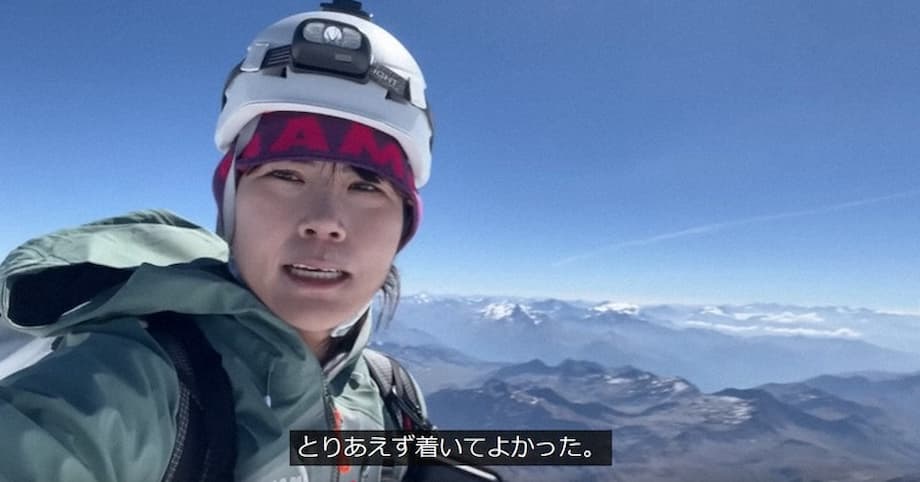Why solitude on Japan peaks is drawing bigger crowds
Solo climbing in Japan has moved from niche to mainstream. Social media is packed with sunrise summit videos, gear walk throughs, and quiet campsite scenes that promote the freedom of being alone in the mountains. This surge in attention comes with hard numbers. National Police Agency data show that solo climbers now account for a large share of people who run into trouble, and their fatality rate is higher than for those traveling in groups. Incidents set a record in 2023 and remained high in 2024, reflecting both a wider outdoor boom and a steady stream of preventable accidents. Mount Fuji and other popular peaks report more cases, including multiple early season deaths involving people who went up alone. Despite the risk, many hikers still choose solitude for the pace, the focus, and the sense of self reliance. This report examines why the choice appeals, what the statistics reveal, where the risks grow, and how to plan for a safer solo day.
Who is choosing to climb alone and why
The core appeal is simple. Many people want quiet, flexible days away from crowds. Solo travel lets a hiker set a pace, change plans without debate, and sit with thoughts in a wide landscape. For some, that solitude is restorative. For others, it is a test of judgment and skill. During the pandemic, interest in outdoor activities that limited close contact grew quickly, which helped introduce more newcomers to hills near cities and on commuter rail lines. A parallel low mountain boom made short summit walks, ridge traverses, and forest loops popular, often with a focus on the journey rather than tagging a summit at all costs.
Profile of a prominent solo creator
One face of the movement is Maria, a Japanese creator with about 250,000 subscribers who documents solo days from Japan’s Northern Alps to big peaks overseas such as Mont Blanc. A near miss in Guatemala forced her to rethink how easily small mistakes can stack up. She now plans methodically, carries what she needs for an unplanned night, and frames every outing as a survival exercise. On video and in print, she shares fear as well as satisfaction, and lays out checklists for gear, weather, route finding, and decision making. Her message is consistent: preparation, listening to early warning signs from the body and the weather, and turning around before the point of no return are the habits that make a solo ascent feel rewarding instead of reckless.
What the numbers say about risk
Police statistics highlight the scale of the challenge. In 2023, Japan recorded 3,126 hiking and mountain climbing incidents, the highest annual total on record. People in distress totaled 3,568, with 335 dead or missing and 1,400 injured. The following year saw some easing, but at still high levels. In 2024 there were 2,946 incidents involving 3,357 people. Among them, 300 died or went missing and 1,390 were injured. A large share of those involved were solo hikers. Solo climbers accounted for about 39.1 percent of people in mountain accidents in 2024 and had a higher fatality rate than those who were in groups. Field experience echoes those figures. A leading location service used in rescues, Cocoheli (a membership locator system carried by climbers), reports that more than three quarters of calls to find lost or injured people involve someone who went out alone.
Age is a consistent factor. People in their sixties and seventies make up the largest share of those in distress each year, and more than 70 percent of those who die or go missing are 60 or older. The reasons vary. Balance, reaction time, and recovery can slip with age. Routes familiar in youth can feel routine but hide real exposure. A light slip can become a serious fall when trails are steep or slick. Keeping trips within current fitness and technique limits, and avoiding time pressure, lowers risk for any age group.
The geography and causes of incidents also form clear patterns. Nagano recorded the most mountain related incidents in 2024 with 321, followed by Hokkaido with 189. Tokyo and Kanagawa each had 183. Popular tourist peaks saw sharp increases. Mount Fuji had 83 people involved in incidents in 2024, up 62 percent compared to the average over five years. Mount Takao saw 131 people involved, up 52 percent over the same benchmark. Losing one’s way topped the list of causes at 30.4 percent, followed by falling down at 20.0 percent, slipping at 17.2 percent, fatigue at 10.2 percent, and illness at 7.6 percent. International visitors also appear more often in the data, with 135 people involved in 99 incidents in 2024, including seven who died or went missing.
Solo versus groups, a clear gap in outcomes
National Police Agency figures in recent years underline the difference in outcomes. Looking at 2019 data, 6.5 percent of people who got into distress while traveling in a group were killed or went missing. For those who were solo, that share rose to 16.1 percent. The absolute numbers have changed since then, but the pattern remains similar. Traveling with one partner or a small team adds a layer of redundancy. A partner can call for help, manage hypothermia prevention, stop bleeding, or keep track of the route while you focus on staying calm. Solo hikers must build that redundancy into their planning and gear.
Mount Fuji and other popular peaks under pressure
Mount Fuji is iconic and accessible, which draws many people who have never been above treeline before. The grade can feel simple in good weather, yet the slope is long and rocky, altitude gain is rapid, and wind and temperature can change in minutes. Early in the 2024 season, Shizuoka prefectural police reported four deaths within the first week after trails opened on the south side of the mountain. All were believed to be solo climbers. Local officials stressed that it is far safer to climb with at least one partner, because a partner can call for help quickly if something goes wrong.
Safety guidance for Fuji is direct. The official climbing information site warns that the mountain is not easy, and that solo trips are risky for people without strength and knowledge. It also cautions against overnight pushes to catch the sunrise, sometimes called bullet climbing. The site’s advice captures the tone that many guides and hut staff use with first timers.
Mt. Fuji is a high mountain. If you lack physical strength or climbing knowledge, avoid solo climbing.
Bullet climbing is not recommended.
The Fuji site also explains that the volcano’s surface is made of loose layers of lapillus. Rocks loosen underfoot and from above. There is always a risk of rockfall on many sections. The site urges hikers to wear helmets, choose rest spots with minimal exposure to rockfall, and shout “raku” (falling rocks) or “rocks” if they trigger or see rockfall. It also recommends traveling by daylight and staying on waymarked trails to reduce the chance of injury or getting lost.
Where solo risk is highest
Risk grows when the chance of small mistakes increases and the time to get help increases. Solo hikers are more exposed to sudden weather shifts, navigation errors, slips on wet rock, or the extra fatigue that comes from carrying all group gear alone. Afternoons and weekends bring more incidents when trails are busy and people are pressed by time. Poor visibility from fog or snow adds to the navigation burden and can turn a short detour into a long off trail slog. The farther a route sits from trailheads or huts, the more crucial early turn back decisions become.
What new research suggests
Researchers at Sophia University built a model in 2025 that uses pre climb data to predict accident types in Nagano. The team trained a language model on 2,596 accidents from 2014 to 2023. The model sorts risk into four categories: falls from height, ground level falls, fatigue, and disorientation. It uses context such as time of day, mountain location, weather, and the climber’s profile. Two categories, falls from height and disorientation, were predicted with better than 60 percent accuracy, and the most important predictors were easy to explain. Morning hours and specific peaks saw more falls from height. Ground level falls clustered around midday in some ranges. Fatigue showed stronger links with older climbers and late afternoons. Disorientation rose in poor visibility and with solo hiking. The researchers believe the approach can power practical tools that give personalized risk checks during planning. It is not a substitute for training or judgment, but it hints at ways future apps could warn hikers before a risky choice becomes a rescue call.
Preparation that keeps a solo day within safe margins
Many solo incidents can be prevented with plain habits. The most effective rescue is the one you never need. Data from a leading locator service shows that more than 76 percent of search calls involve solo hikers. That number can fall with careful planning, modest goals, and redundant systems for navigation and communication. The steps below address the most common failure points.
- Match the objective to current fitness and skills. Build up with shorter routes and simple terrain before choosing complex traverses or long days.
- Make a route plan and share it. Tell a family member or friend where you are going and when you expect to return. Leave a paper plan in trailhead post boxes where available.
- Check the full forecast, including wind, temperature, and cloud base. Set a turnaround time and keep it.
- Prioritize daylight. Start early to avoid fatigue and navigational mistakes late in the day. Avoid night ascents unless you have the experience and gear for it.
- Avoid all night pushes to catch the sunrise at Fuji. Stay in a lodge if the goal is a dawn summit.
- Carry essential gear: insulation layers, waterproof shell, gloves and hat, headlamp with spare batteries, map and compass, a charged phone and a power bank, a GPS app with offline maps, a whistle, basic first aid, and a helmet on routes with rockfall risk. Footwear should be appropriate for the surface and season.
- Respect waymarking. Stay on marked trails. Track your position often so that small errors do not become big ones.
- Use redundancy for communication. Share your location with a trusted contact. Carry a locator or beacon such as Cocoheli, or a satellite messenger in areas with weak cell coverage.
- Watch for altitude and weather symptoms. Slow down, hydrate, and descend if you develop a headache, nausea, dizziness, or if wind and cloud build quickly.
- Pack food and water for more time than you expect to be out. A light emergency shelter can make a long wait manageable.
- Study seasonal hazards in the region you plan to visit. Snow, ice, and heavy rain change trail character, even on low peaks.
- Know when to stop. Turning around is a skill. There will be other days.
Groups add redundancy for some trips, especially on remote or technical routes. For those who prefer solo days, choose conservative objectives until skills grow. Seek instruction through mountain clubs or guide services to learn navigation, movement on steep ground, and risk assessment.
Content creators and responsibility
Media shape expectations. Well intentioned clips that skip over preparation can make a hard route look casual. The most helpful creators blend inspiration with education. Maria and a growing set of Japanese solo hikers now publish checklists, weather walkthroughs, and debriefs of mistakes as well as successes. That tone matters. It encourages newcomers to see decision making and preparation as part of the reward, not just the summit photo. Brands, tourism offices, and creators can reinforce the message by providing clear safety information with each destination post and by discouraging risky practices like short cutting trails for dramatic shots.
Key Points
- Solo climbing in Japan is more popular, driven by a taste for solitude, social media, and a wider outdoor boom after the pandemic.
- National Police Agency data show 3,126 incidents in 2023, a record, and 2,946 in 2024 involving 3,357 people.
- Solo hikers made up about 39.1 percent of people involved in mountain accidents in 2024 and show a higher fatality rate than groups.
- Getting lost leads the list of causes, followed by falls and slips, with older climbers forming the largest share of those in distress and of deaths or missing.
- Nagano recorded the most incidents in 2024, while tourist peaks such as Mount Fuji and Mount Takao saw large increases versus the five year average.
- Early in the 2024 Fuji season, Shizuoka prefectural police reported multiple fatalities, all believed to be solo climbers.
- The official Mount Fuji site warns that those without strength or knowledge should avoid solo climbing, and advises against overnight pushes known as bullet climbing.
- New research from Sophia University links disorientation to solo hiking in poor visibility and shows potential for personalized risk checks before a trip.
- Risk drops with clear planning: share a route plan, check weather, avoid night ascents, carry proper gear, use location sharing or a beacon, and turn back early when conditions shift.




